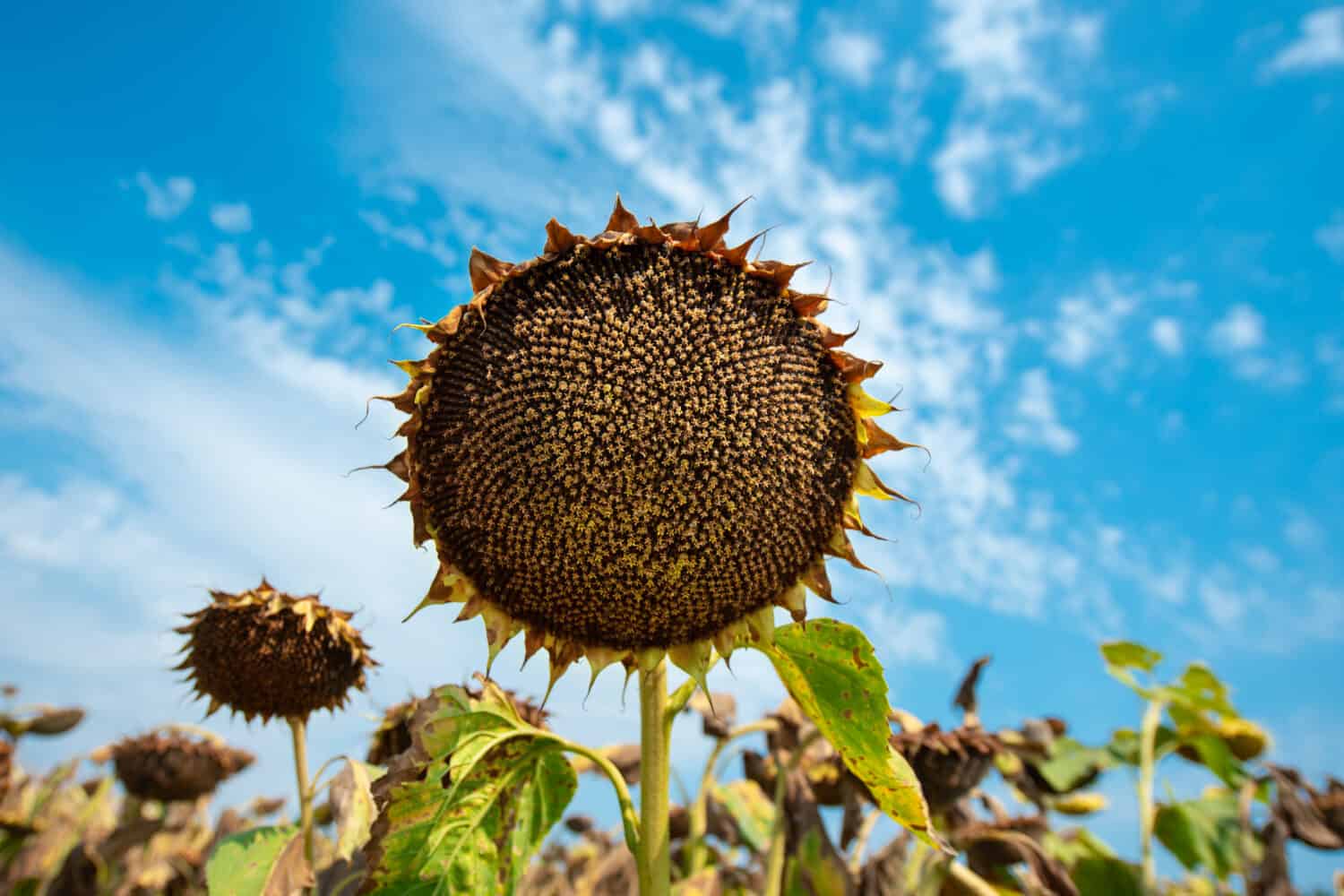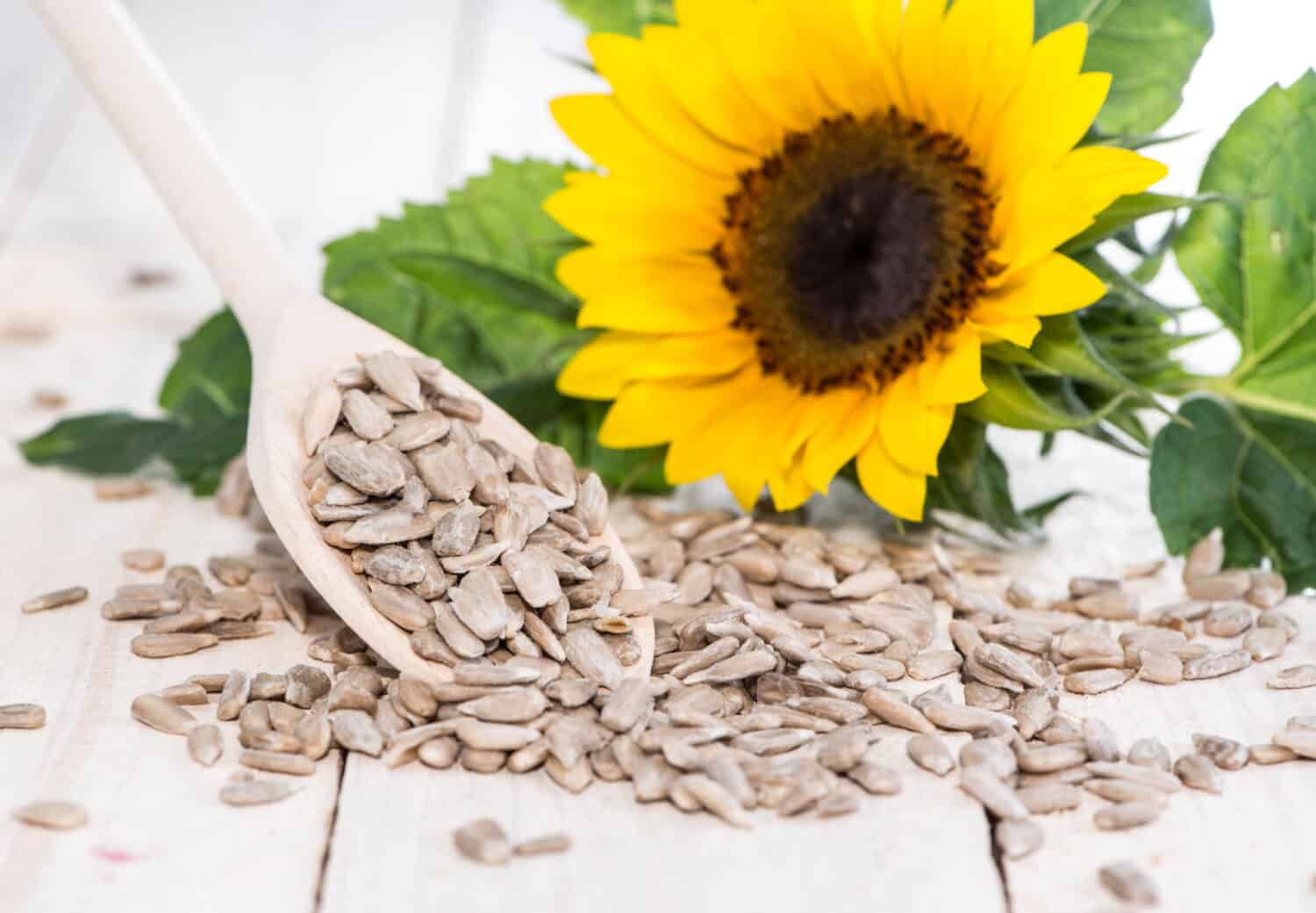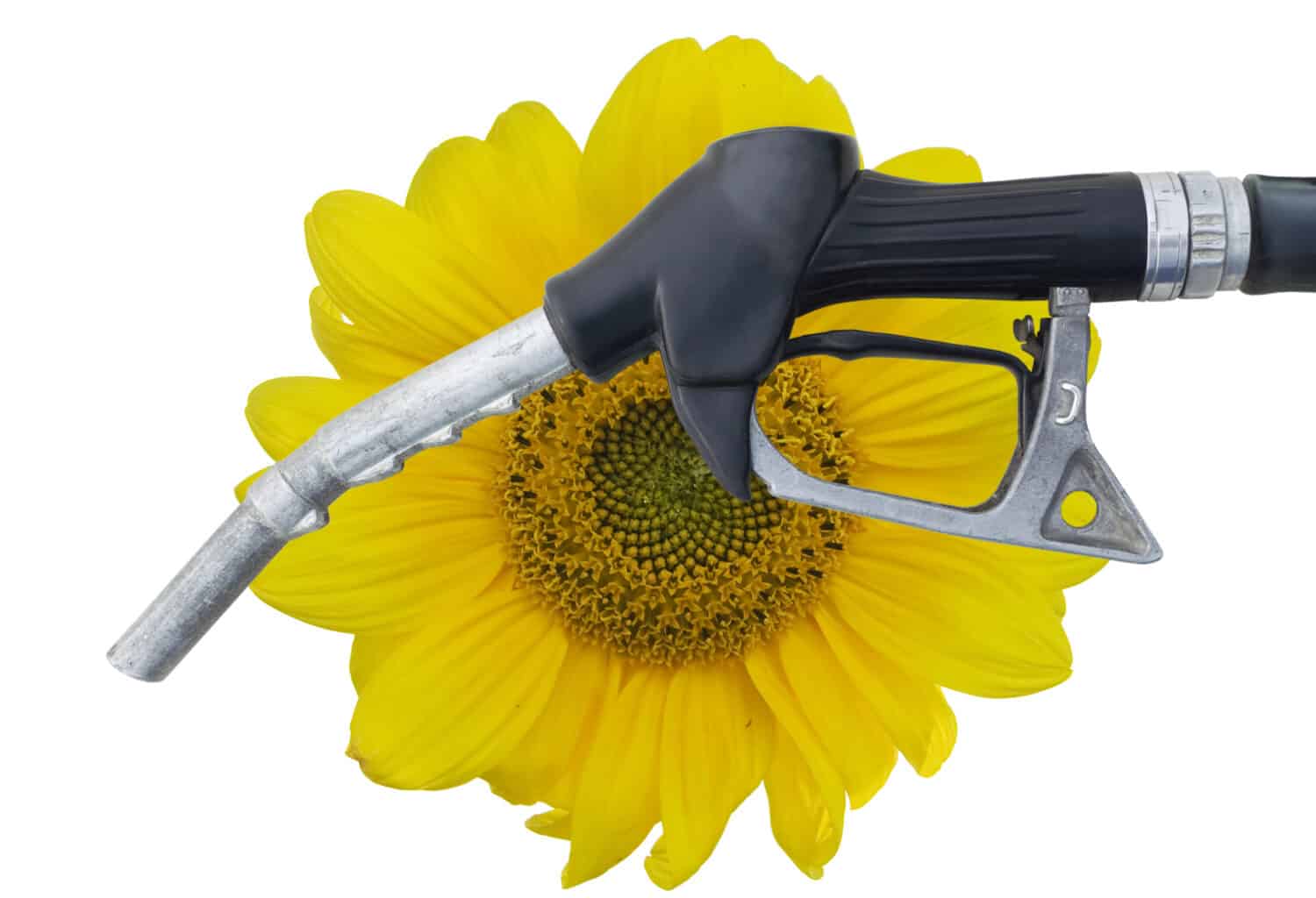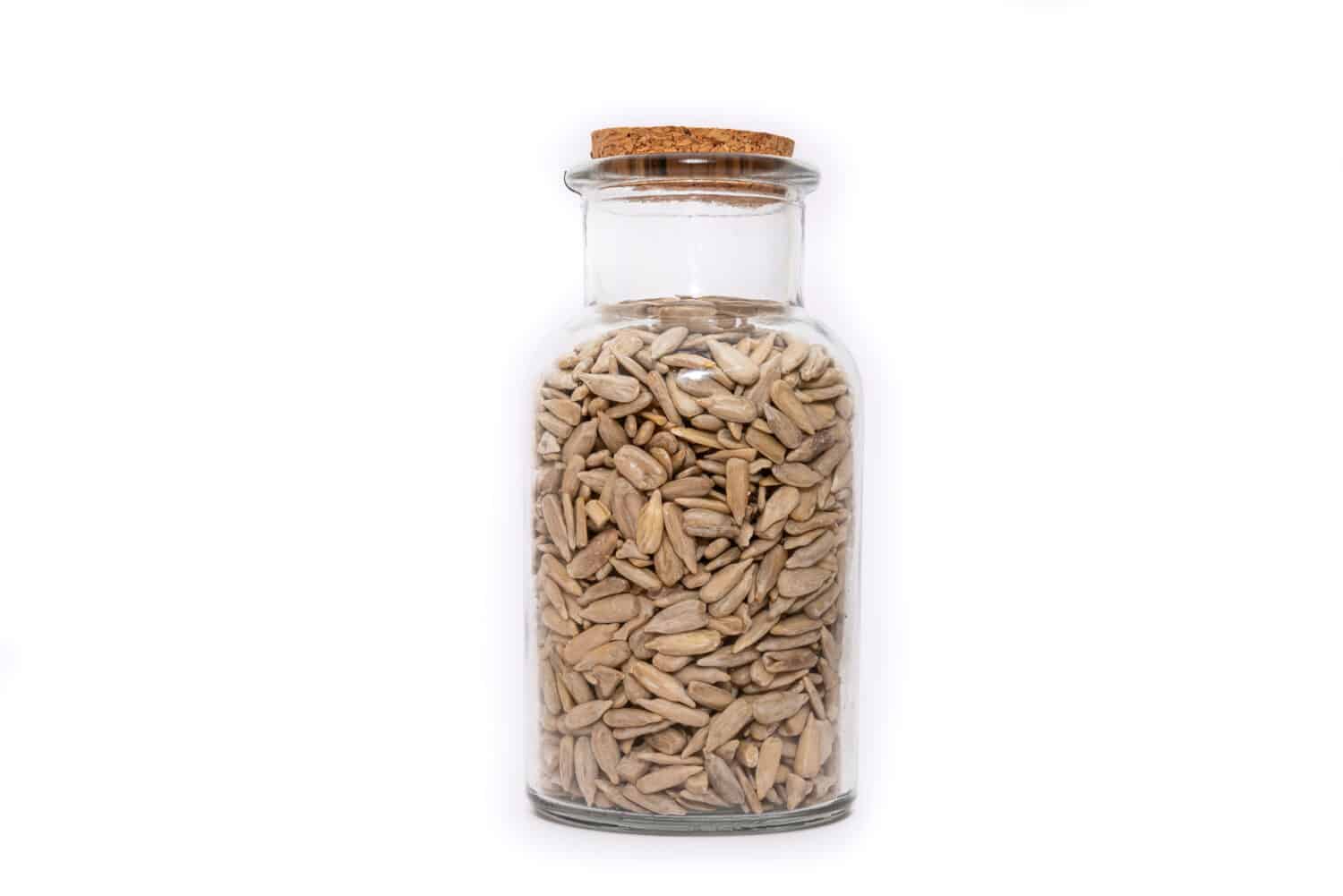Sunflowers (Helianthus annuus) resemble the sun due to their physical appearance. Their large, striking yellow flowers also tend to follow the sun’s movement throughout the day. Photosynthesis in plants is an essential process that results in the plant’s healthy growth and development. Sunflowers can capture the maximum amount of light for photosynthesis by facing the sun. This process stops when the sun sets, and the sunflower will no longer follow the sun, and it will reset itself into an easterly direction, ready to start again from sunrise to sunset the following day.
The bright yellow sunflower is famous as a beautiful decoration in gardens and flower arrangements inside the home. In addition, the sunflower also produces many sunflower seeds from one single flower head, which has been a valuable source of nutrition for many centuries. How do you harvest these delicious sunflower seeds, and when? Let’s find out!
When to Harvest Sunflower Seeds
During their growing period up to before it is ready to be harvested, sunflowers are upright and always facing the sun. During this stage, the back of the flowers will be green, and the circumference petals will be bright yellow, which makes the flowers perfect to be harvested for display in flower bouquets and other decorations.
Sunflowers appear less vibrant when ready for the harvesting of seeds. You can harvest the seeds when the flower head begins to droop and the back of the flower head turns yellow or brown. The flower petals should have fallen off by then.
Seed harvest readiness occurs 30 to 45 days after the flower has bloomed, typically in late summer or early fall, depending on your location and the weather. Sunflowers usually take between 80 and 120 days to grow from seed to maturity, depending on the specific variety and growing conditions. Therefore, the time of year to harvest sunflower seeds can vary depending on the climate and the cultivar of sunflower that you are growing. You will also notice that the flower head has dried out, and the seeds are plump and loose in their seed sockets.
If you are still unsure when to harvest your sunflower seeds, you can determine the maturity of the seeds by pressing your thumbnail into one of the seeds. If the sunflower seed is firm and your nail does not make an indent, it is ready to be harvested. It will need more time to dry out and mature if not. Harvesting properly developed seeds will ensure the best quality, flavor, and oil content.

Sunflowers look less vibrant, and the flower head will begin to droop when the seeds are ready for harvesting.
©Palukhin Andrii/Shutterstock.com
Benefits of Harvesting Sunflower Seeds
Sunflowers also make great cut flowers and can be used in all kinds of decorations, from centerpieces to garlands for your front door. They’re also great for pollinators like bees and butterflies. Harvesting sunflower seeds has an immense help with the propagation of healthy sunflower plants and ensuring the production of healthy crops for the benefit of future generations.
Here is a list of benefits of harvesting sunflower seeds:
- You can plant the harvested sunflower seeds in the future growing seasons.
- Harvesting the seeds at the appropriate time will ensure that the seeds are still plump and full of beneficial nutrients, digestive fiber, and oils.
- If you do not harvest the seeds, they will dry out too much and lose much of the nutritional benefits.
- When the seeds remain on the plant, the wild birds and other animals will eat them, and there will be very little left for the benefit of the garden owner or large-scale farmer.
- The sunflower produces around 2,000 seeds from one flower. If you do not harvest the seeds, they will fall onto the ground and germinate from there. Too many seeds too close to each other will result in overcrowding of plants and plant health will be negatively affected.

One sunflower can produce more than 2,000 seeds.
©HandmadePictures/Shutterstock.com
Nutritional Benefits of Sunflower Seeds
There are numerous nutritional and health benefits for humans and the benefits gained for the plants and the ecosystem.
Here are a few ways that humans can benefit from sunflower seeds:
- Sunflower seeds contain lots of healthy fats, including monounsaturated and polyunsaturated fats. These fats are beneficial because they can help reduce inflammation and improve the health of your cardiovascular system.
- The seeds are an excellent source of protein which is essential for muscle maintenance and development.
- Sunflower seeds’ high dietary fiber content assists with your digestive system and weight control.
- Sunflower seeds include essential vitamins and minerals such as vitamin E, B1, magnesium, copper, selenium, and phosphorus. Vitamin E can help protect cells from damage caused by free radicals, while magnesium ensures normal blood pressure and blood sugar levels.
- The healthy fats in sunflower seeds help reduce cholesterol and the likelihood of heart disease.
- Sunflower seeds contain choline, essential for brain development and function, and other nutrients that may help support cognitive function.
Sunflower Seeds as a Source for Biofuel
Sunflower seed oil can be used as a raw material to produce biodiesel. Biodiesel is a renewable, biodegradable, and non-toxic fuel you can create from various vegetable oils, including sunflower seed oil.
Sunflower seed oil also has a high yield of oil per unit of land, making it a potentially more efficient source of biodiesel than some other vegetable oils.
However, like other vegetable oils, sunflower seed oil may compete with food production and could lead to deforestation if grown on a large scale. Therefore, controlling biodiesel production from sunflower seed oil is critical to minimize environmental or social impacts.

Sunflower seed oil has the potential to be an efficient source of biodiesel.
©ANATOL/Shutterstock.com
Sunflower Seeds as Animal Feed
Not only are sunflower seeds a nutritious addition to the diet of people, but to many animals too. They are an excellent source of protein, healthy fats, and various beneficial vitamins and minerals. In addition, the seeds are popular for birds, as they are easy to eat and provide a good energy source. Many species of wild birds, like finches and sparrows, enjoy eating sunflower seeds.
As part of their diet, you can use sunflower seeds to supplement food for other animals, such as squirrels and hamsters. However, it’s important to note that some animals may have difficulty digesting the tough seed casings, and you may have to remove the shells first. Ensuring the seeds are fresh and free of mold or other contaminants is crucial, as these can harm animals.
How to Harvest Sunflower Seeds
In the case of large-scale production on commercial farms, one should use combined harvesting machines. These harvesting machines are very sophisticated and save on labor costs and time. However, the input costs for these harvesters are relatively high, but the higher volume throughout justifies the price of the equipment.
Mechanical harvesting methods include:
- Cutting the flowers and removing the seeds
- Using blowers to separate the seeds from the rest of the plants
- If the seeds are for oil production, the seeds get stripped from the heads without damaging them. The seeds then get cleaned and dried before they are processed to produce oil.
Once you have harvested the seeds, store them in a dry place until ready to be used or processed.
The backyard gardener and smaller market gardens can use manual harvesting methods.
This simple method includes the following steps:
- You can cut the flower heads from the plants using a pair of sharp scissors or pruning shears. Ensure that you leave a few inches of stalk attached to the head. Place the harvested flower head in a bag so that you can catch the seeds that may fall from the head.
- Hang the bags with flower heads in a dry, well-ventilated area until completely dried.
- Once the flower heads are dry, gently rub or brush them to remove the seeds from the flower head. You can also use your hands to pull the seeds off.

Sunflower seeds can last up to one year when stored in a cool, dark place.
©Steven Giles/Shutterstock.com
How to Store Sunflower Seeds
Storing sunflower seeds:
- Remove the seeds from the flower head by cutting or rubbing them off with your hands.
- Rinse the seeds in a strainer to remove any dirt.
- Arrange the seeds in a single layer on a clean, dry surface or tray.
- Allow the seeds to air dry for several days, stirring them occasionally to ensure even drying.
- Once the seeds are completely dry, transfer them to an airtight container such as a jar or plastic bag.
- Store the container in a cool, dark place like a pantry or cupboard.
Properly stored sunflower seeds can last up to a year. However, it’s also important to note that if the seeds are not completely dry before storage, they can develop mold and rot.
If you want to store some seeds for planting in the following season, remove any plant material from them and place them in a paper envelope or a breathable container such as a mesh bag. Label the envelope clearly with the variety and date of harvest and store it in a cool, dry, and dark place.
How to Roast Sunflower Seeds
Sunflowers have been used for centuries for their medicinal properties as well as for food and decoration. Here’s how you can roast sunflower seeds to enjoy a delicious, wholesome snack:
- First, preheat your oven to 300°F.
- Next, rinse the sunflower seeds under cold water and remove any debris or husks.
- After that, spread the seeds in a single layer on parchment paper in a shallow baking tray.
- Then, drizzle the seeds with an oil of your choice and sprinkle with salt or any of your favorite seasonings.
- Finally, toss the seeds with your hands until they get evenly coated with oil and seasoning.
- Place the baking sheet in the prepared oven and roast for 20-30 minutes, stirring every 10 minutes, until the seeds are golden brown and crispy.
- Remove the baking sheet from the oven and let the seeds cool completely before enjoying.
Final Thoughts
Sunflowers are the ultimate plant for plant enthusiasts. They grow big, bold, and want to get seen. That’s why we love them. They’re not afraid to be big and bright. They don’t care if you want to use them in your landscape or as a part of a bouquet because they’ll do whatever you need them to do.
Sunflowers are large, gorgeous yellow flowers, but they also produce wonderful seeds to eat or enjoy as ornamental flowers. In addition, the seeds are easy to harvest, store, and roast! So, next time you see a sunflower, whether it stands tall and proud in a backyard garden or on a farm as a sea of yellow, you will remember to be grateful for the wonder of the sunflower.
The photo featured at the top of this post is © iStock.com/Katie Simmons
Thank you for reading! Have some feedback for us? Contact the AZ Animals editorial team.






